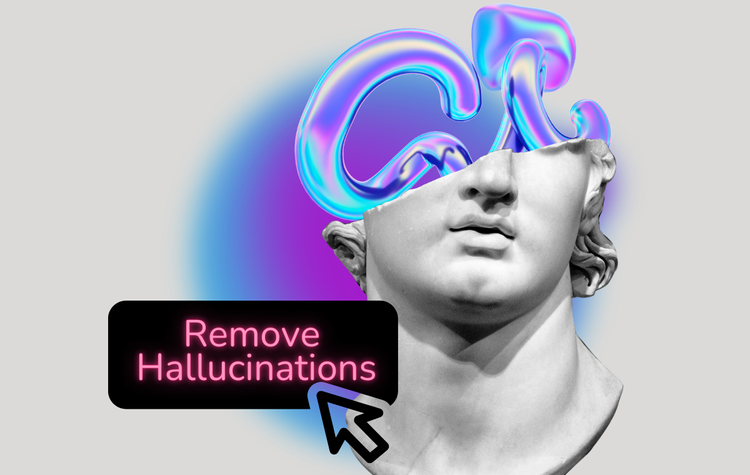How to Improve CSAT Scores In Call Centers
Measuring and improving CSAT is important for any call center. This article reviews 4 sound strategies for improving your CSAT score.

Are you trying to improve your customer service by increasing your CSAT score?
What is CSAT? Do you know what your CSAT score is?
More importantly, do you know if your score is any good?
The CSAT meaning is simple – it's an acronym that simply refers to “customer satisfaction.” CSAT is a metric utilized by call centers to measure how satisfied your customers are after interacting with your brand.
The metric includes any type of interaction, everything from a purchase to a support call, making it incredibly important for call centers to track.
What's a good CSAT score? The hard truth is, while a good CSAT score is around 85% according to Zendesk’s “Benchmark” industry survey, some companies score *much* lower than that (try as low as 15%– yikes).
If you’re looking to improve your customer satisfaction, CSAT is a critical metric you need to be tracking and working to improve over time.
Read on to learn how to improve CSAT scores in your call centers.
How to Collect Your CSAT Data
CSAT is a simple metric with big value, as it can tell you how satisfied your customers are with you as a whole.
Here are the steps to gathering your CSAT data:
1. Find the right CSAT question format(s) for you
Typically, to calculate your CSAT score you’ll disseminate a survey with some version of the question:
“On a scale from 1-10, how satisfied were you with your [experience] today?”
However, this isn’t the only version you can use.
(In fact, there is no concrete rule for how to collect CSAT data nor how to measure CSAT itself– but more on that later.)
First, there are a variety of ways that you can present your question(s). They include:
- Number scale (most common, typically 1-10)
- Smiley scale (same as the number scale but using sad >>> happy emojis)
- Multiple choice (typically something like: “not at all satisfied” “somewhat satisfied” “satisfied” “moderately satisfied” or “very satisfied”)
- Binary (simple yes or no)
- Open answers (hard to measure this but can lead to great insights)
Next, you’ll pick your question(s). Using the above formats, here are a few examples:
- Scale: “On a scale from 1-10, how satisfied were you with…?”
- Binary: “Was [representative] able to resolve your issue?”
- Multiple choice: “How would you describe your experience with [company]?
No matter what you choose, the basic idea is the same. Just make sure to consider what the data will look like when you get it back to determine how and what you want to ask.
2. Choose your preferred data collection method
Next, you’ll need to know how you’re going to collect your data.
This is extremely straightforward as there are really only a few different types of surveys you can use.
Here are your options and why you might choose one over another:
End-of-chat survey
Increasingly becoming the most common of all CSAT data collection methods, collecting customer satisfaction responses at the end of chat interactions is incredibly easy and offers the least friction to the customer.
This is increasingly becoming the most convenient method, as with a tool like Gleen AI you can have your chatbot automatically collect responses at the end of every customer interaction.
End-of-call survey
Perhaps the most well-known still, this is a quick survey at the end of a support call asking you to rate the agent you just interacted with and your overall experience.
Call-back survey
A call-back survey is convenient because it allows the customer to respond at their convenience by calling the customer at a later time using an automated system.
How to Calculate CSAT
Now, let’s talk about how to calculate CSAT.
Once you’ve collected your data, the most basic way to calculate your CSAT score is:
( [Satisfied responses] / [Total number of respondents] ) x 100 = CSAT score
Let’s plug in some numbers and see what that should look like:
For the sake of a simplified example, let’s say you received 100 responses, 60 or those positive.
If we plug those numbers into our equation, it would look like this:
( 60 / 100 ) x 100 = 60%
Keep in mind that this is only one way to calculate CSAT.
If you’re using a number scale (1-10), use this equation:
( [Total of all respondent’s scores] / [Maximum score total] ) x 100 = CSAT average
In the same way that you would calculate the average of anything, you take the total number of all responses and simply divide it by the maximum number of points possible.
For example, if we received 100 responses ranging from 1 to 10 and we added all 100 response values and it equaled 550, that equation would look like this:
( 550 / 1000 ) x 100 = 55%
One thousand is the maximum number of points possible as each survey is a possible 10 points multiplied by 100 respondents.
These are just two ways you can calculate your CSAT score, but they’re two of the most common.
What Should Your Call Center’s CSAT Be? (Industry Benchmarks)
Now that you know how to gather your CSAT data and calculate your CSAT score… what should your score be?
What is a great score, a good score, and what is a “Houston, we have a problem”?
According to Zendesk’s massive Benchmark study, one of the largest done of its kind and spanning 14 major industries, a good CSAT score is about 80%.
In addition, they calculated that the average global satisfaction score was 86% across all data sets.
With that said, they depend highly on the industry. Make sure to compare your data with that of companies within your same industry to get as accurate insights as possible about where you stand.
4 Tips for Improving Your CSAT Score
Now, let’s go over some tips for improving your CSAT score.
Below is a variety of less common tips that offer real potential for improving your customer satisfaction scores:
1. Give customers more of what they want (Self-service is the new preference)
Believe it or not, giving your customers more power to solve their problems on their own can improve your CSAT.
In a 2018 study by data platform Statista, 88% of U.S. customers reported preferring self-service options for troubleshooting and an all-around improved customer experience.
This has double benefits, as you’re reducing your number of requests by offering great self-service options while also making your customers happier.
One of the best options? A community forum like Google’s gives you the ability to mobilize your community to come together and help one another, making it the ultimate self-service tool.
Support.google.com allows you to post a question, like this:
And get a helpful response:
The most helpful response is even singled out and labeled as such, saving you time looking for an answer among the responses.
2. Reduce response times
In an interview with SentiSum, Head of Merchant Support at Printify Valeria Kast spoke on how she was able to boost Printify’s CSAT score by double-digits to an impressive 94% by cutting their average support response time from 24 hours down to under one minute.
When a customer calls into your call center and receives a prompt response, they’re both surprised and delighted. Let’s be honest: it’s not the norm.
That’s an amazing opportunity to make your customer service team more efficient while also improving CSAT or customer satisfaction (yet another double win).
So then, how do you go about actually doing that?
One great option is to use a generative AI tool like Gleen AI as an internal “Agent Assist” tool.
With it, agents can use AI to automatically pull relevant knowledge base articles and recommended responses, streamlining your agent’s process and reducing response times.
If you’ve been hesitant to give AI a try in your customer service process, using it internally to assist your agents is a great place to dip your feet and see what it can do.
Schedule a free demo to see how Gleen AI can help reduce response times.
3. Don’t overlook negative reviews
A simple but powerful tip is to dig deeper into the customer satisfaction data you collect.
After collecting your data, don’t just look at the percentage of positive to negative satisfaction and be content.
Take a look at your negative reviews and give them the time of day. Read them with an open mind and consider each carefully.
Is there a pattern to your negative reviews? Something that keeps cropping up?
Maybe there’s nothing obvious at first, but the more you consider them you begin to notice a kind of indirect pattern, that they all revolve around something that those reviews aren’t quite putting their finger on.
It’s easy to look at negative reviews and take them at surface level. However, your customers aren’t always going to be able to identify or communicate their issues in a way that is immediately easy to understand.
So, take the time to dive into your negative responses and reviews in general to uncover insights about how you can improve your customer satisfaction.
4. Put yourself in the shoes of your customer and walk the customer journey
One final but powerful tip is to take a step back and go on a bit of an investigation through your customer’s journey.
Ask these and other questions to start to get a clearer picture of what your support experience is like for your customers:
- What is it like for a customer to seek out support from your brand? What is it like when they call your call center?
- What is their first impression when jumping on your IVR: frustrated, confused, or delighted it’s so simple and easy to use?
- And what about when they get connected to an agent? Are your agents communicating effectively and really listening to your customers?
- What about when you (putting yourself in the shoes of your customer) need to be transferred? Does it feel seamless, or does that new agent have to ask for your personal information all over again?
Taking time to delve deep into your call center’s process from the perspective of your customer can provide huge dividends that allow you to completely reinvent your process.
CSAT vs NPS: What's the difference?
It’s no secret that there is no perfect metric.
CSAT has its issues, so you should be combining it with other metrics such as NPS to get a more complete picture of how your customers feel about your brand.
As opposed to CSAT, which is a metric designed to gauge your customer’s level of satisfaction, NPS is a measure of how likely your customers are to recommend your brand to a friend or acquaintance.
If you think of it like looking at a 3D object with many contours and details, CSAT is one perspective, while NPS allows you to look at the same object from a totally different angle.
With that, you can pry out new insights you otherwise wouldn’t have been able to uncover otherwise.
To learn more about NPS and how to improve it, read our guide: How to Improve Your NPS Score: 7 High-Value Tips.
Improve Your Customer Satisfaction with Gleen AI
CSAT scores aren’t the end-all-be-all, but it is an incredibly useful metric for getting a read on the pulse of your customer base.
It lets you know if the majority of your customers are happy with your service or not, and why, allowing you to gain new insights that help you improve the performance of your call center, CS, and CX as a whole.
One of the easiest ways you can begin improving your customer satisfaction is with Gleen AI’s generative AI tools, which allow you to offer:
- A seamless self-service chatbot on the front-end of your business, as well as
- The ability to use Gleen AI as behind-the-scenes Agent Assist
Schedule a free demo of Gleen AI’s powerful generative AI tools or start creating your free custom bot today.



